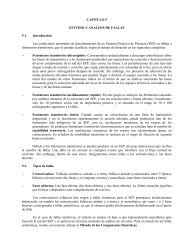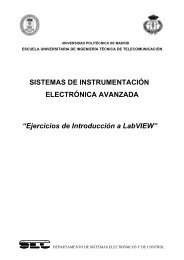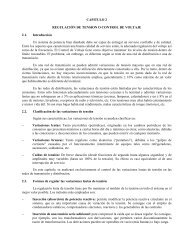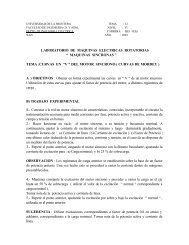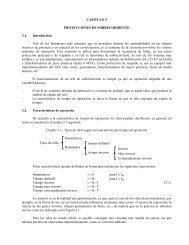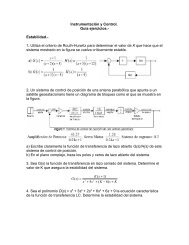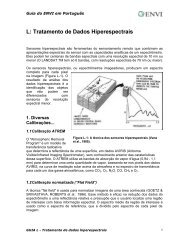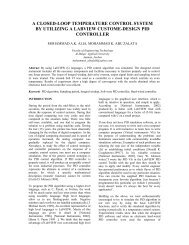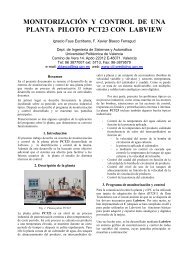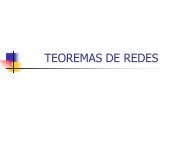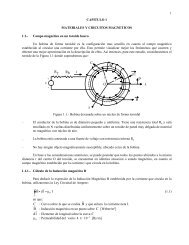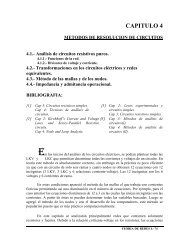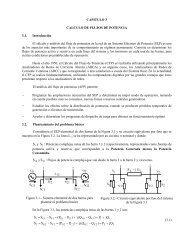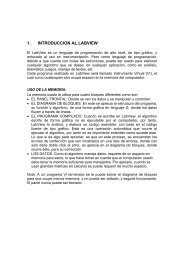T 7.2.1.3 Amplitude Modulation
T 7.2.1.3 Amplitude Modulation
T 7.2.1.3 Amplitude Modulation
Create successful ePaper yourself
Turn your PDF publications into a flip-book with our unique Google optimized e-Paper software.
TPS <strong>7.2.1.3</strong><br />
Review<br />
3 Review of amplitude modulation<br />
In amplitude modulation (AM) the momentary<br />
value of the message signal s M (t) has an<br />
immediate effect on the amplitude of the carrier<br />
oscillation s C (t). This takes place in a modulator,<br />
see Fig.3-1.<br />
Here it would be:<br />
s C<br />
(t) = A C<br />
cos (2 π f C<br />
t) (3-1)<br />
for the high-frequency carrier and:<br />
1. s M<br />
(t) = A M<br />
cos (2 π f M<br />
t) (3-2)<br />
for the low frequency message signal. The combining<br />
of the carrier and message signal in the<br />
modulator then provides the following modulation<br />
product:<br />
s AM<br />
(t) = [A C<br />
+ α s M<br />
(t)] cos (2 π f C<br />
t) (3-3)<br />
= [A C<br />
+ α A M<br />
cos (2 π f M<br />
t)]<br />
cos (2 π f C<br />
t).<br />
Where α stands for the modulator constant, which<br />
expresses the affect of the message signal s M (t)<br />
on the amplitude A C of the carrier. Normally (3-3)<br />
is described in more general terms. For this you<br />
need the following definitions:<br />
∆A C<br />
= α A M<br />
<strong>Amplitude</strong> deviation (3-4)<br />
A<br />
m = ∆ C<br />
A<br />
C<br />
<strong>Modulation</strong> index (3-5)<br />
<strong>Amplitude</strong> deviation ∆A C describes the maximum<br />
change away from the original value A C in the carrier<br />
amplitude. The modulation index m reproduces<br />
the ratio of the amplitude deviation to the carrier<br />
Fig. 3-1: Generation of amplitude modulation<br />
amplitude. Thus it is possible to convert (3-3) as<br />
follows:<br />
⎡ ∆A<br />
⎤<br />
C<br />
sAM<br />
( t) = A ⎢<br />
C 1+ cos( 2π<br />
fMt)<br />
⎥cos<br />
2π<br />
fCt<br />
⎢<br />
⎣<br />
A<br />
⎥<br />
C<br />
⎦<br />
A 1 mcos<br />
2π<br />
f t cos 2π<br />
f t<br />
C M C<br />
( )<br />
[ ] ( )<br />
= + ( )<br />
(3-6)<br />
Fig. 3-2 shows the amplitude modulated signal according<br />
to (3-6). The modulating signal s M (t) can<br />
be recognized in the envelope curve.<br />
Normally the following holds true: 0 < m < 1.<br />
The following limiting cases for m are interesting:<br />
m = 0 : no modulation effect<br />
m = 1 : full modulation, the envelopes bordering<br />
the modulating signal just touch at their<br />
minimum values<br />
m > 1 : overmodulation, the envelopes permeate<br />
each other, modulation distortion arises.<br />
m = 0%<br />
A C<br />
s AM<br />
T C<br />
Envelope<br />
∆A C<br />
∆A C<br />
m = 100%<br />
T M<br />
Envelope<br />
m > 100%<br />
Fig. 3-2: The amplitude modulated signal<br />
Fig. 3-3: Limiting cases for the modulation factor<br />
23



